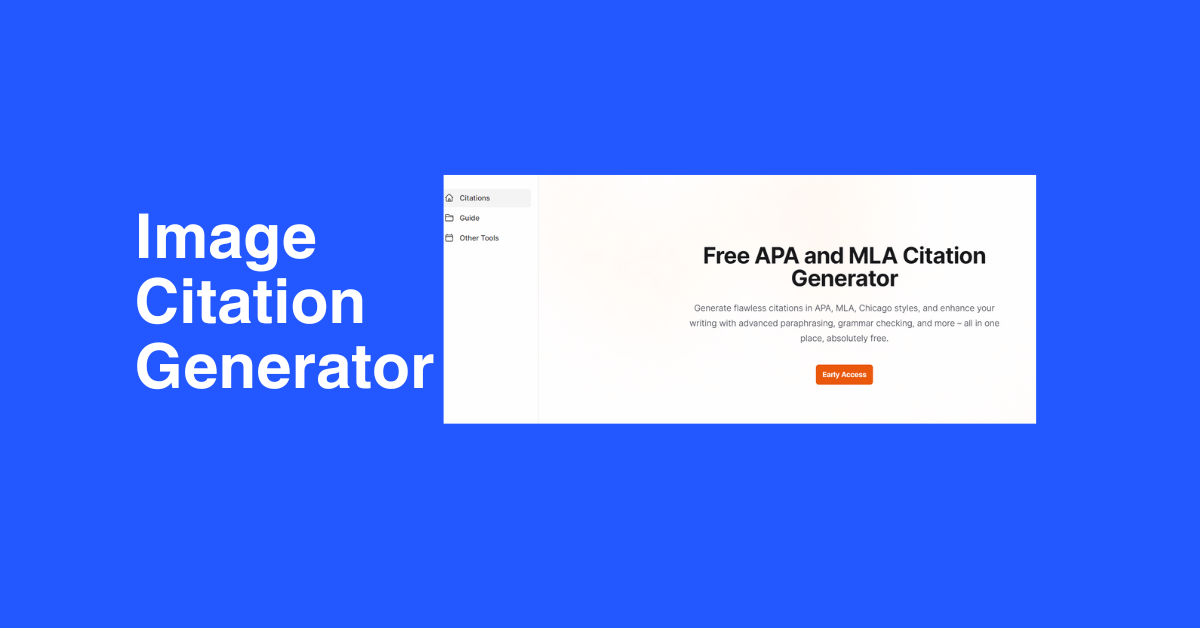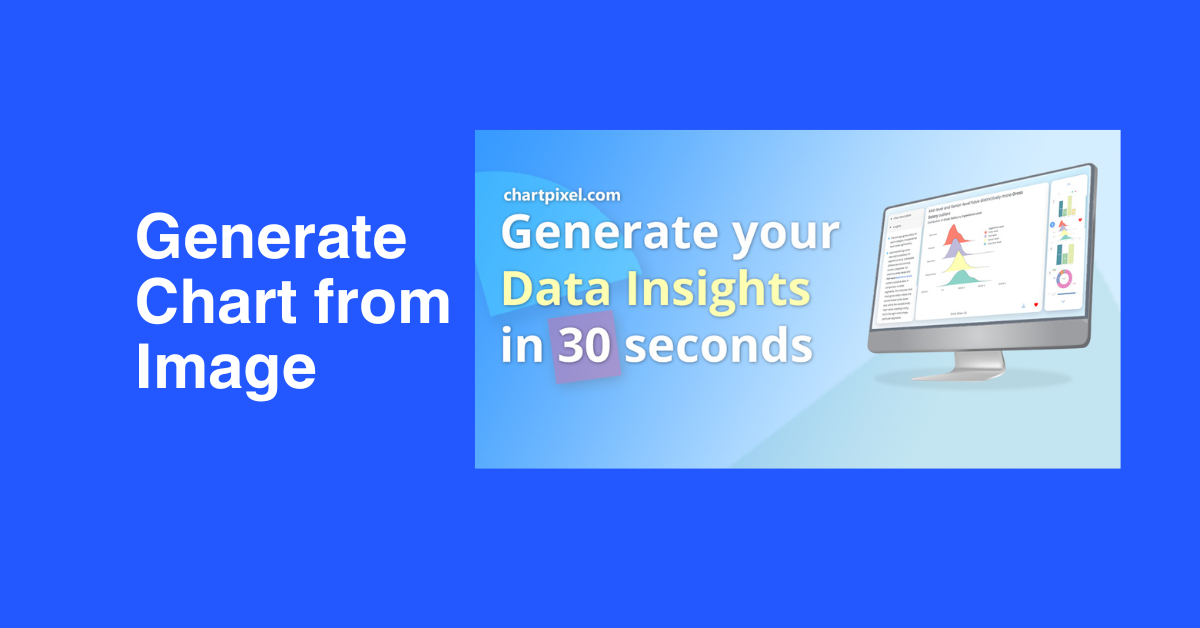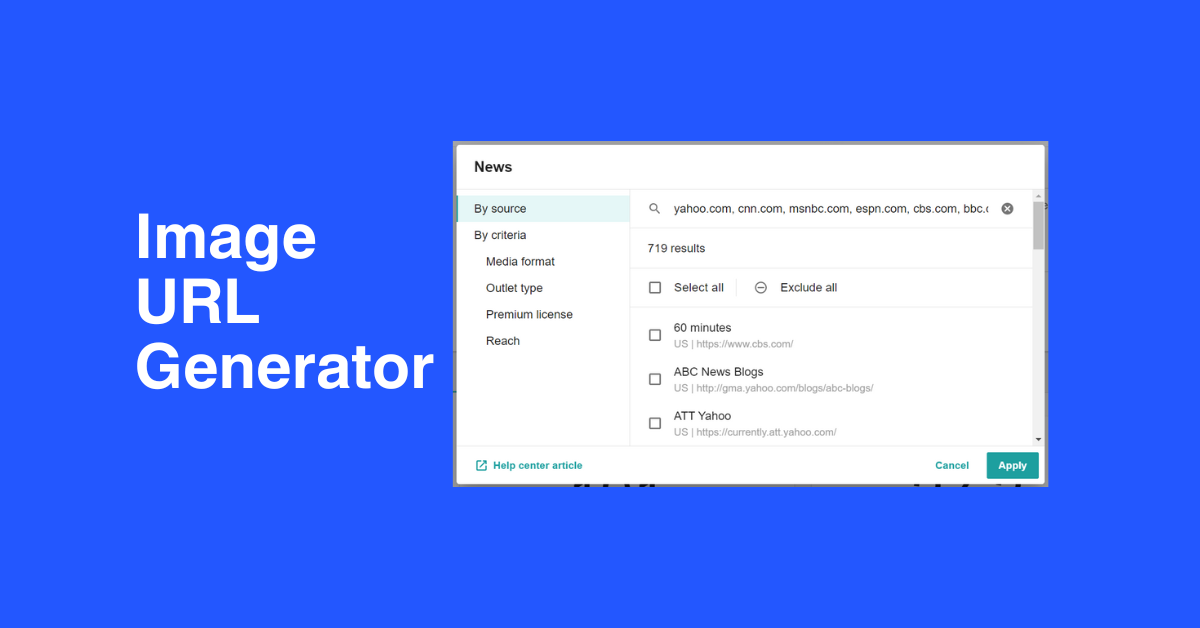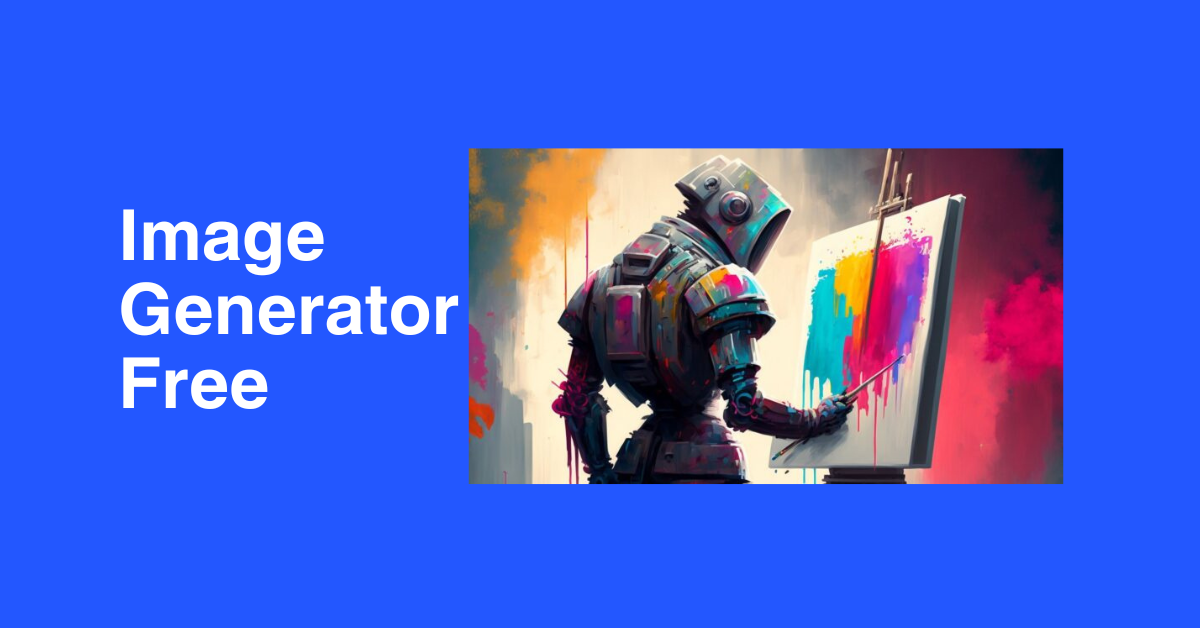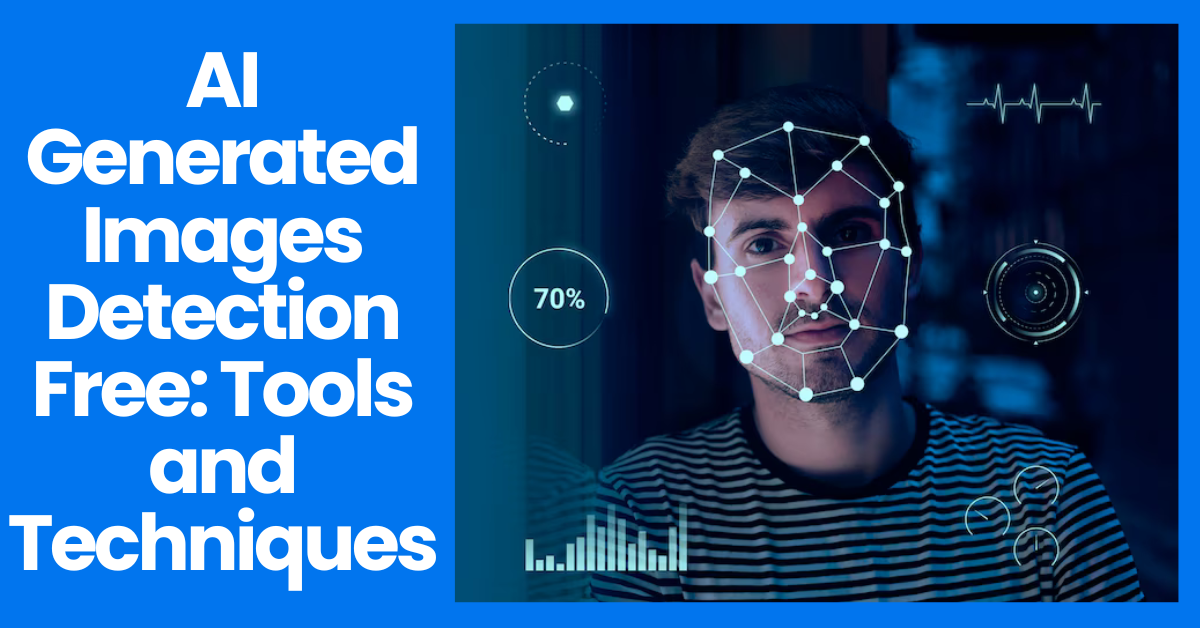
AI Generated Images Detection Free: Tools and Techniques
- Image Generators
- November 8, 2024
- No Comments
AI Generated Images Detection Free tools are essential in our increasingly digital world, where images have become a fundamental part of communication and information sharing. However, with advancements in artificial intelligence (AI), distinguishing between authentic photographs and AI-generated images has become increasingly difficult. The implications of this blurring line are vast, impacting everything from social media narratives to misinformation campaigns. This guide aims to equip you with free tools and methods for detecting AI-generated images, empowering you to critically evaluate the visual content you encounter online. By understanding how to spot the synthetic from the real, we can all contribute to a more informed society.
AI Generated Images Detection Free Tools: Your Free Arsenal to Uncover the Fake
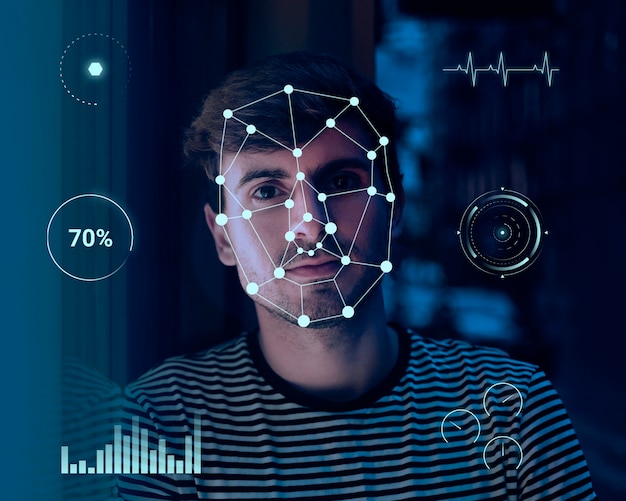
In the realm of image verification, numerous free tools can assist individuals in identifying AI-generated images. These applications leverage sophisticated algorithms and machine learning techniques to analyze various aspects of an image that may indicate its authenticity—or lack thereof.
Understanding the Technology Behind AI-Generated Images
AI-generated images are created using deep learning models, such as Generative Adversarial Networks (GANs). These models are trained on vast datasets, enabling them to generate highly realistic images that can often fool even the most discerning eye.
The technology behind AI image generation is rapidly evolving. It exploits patterns learned from real images and recreates new ones that mimic those characteristics. Hence, understanding how these models function provides crucial insights into how they can be detected.
The main challenge lies in the fact that AI-generated images can appear incredibly lifelike, complete with accurate lighting, shadows, and colors. As users become more aware of these technologies, it becomes imperative to develop equally adept detection methodologies.
Popular Free AI Image Detection Tools
Several online platforms offer free services to help users identify AI-generated images. Some notable tools include:
- Deepfake Detection Tools: Websites like Deepware or Sensity AI analyze videos and images to detect manipulations, including those generated by AI.
- Image Forensics Platforms: Tools like FotoForensics provide detailed analysis of images, revealing potential signs of manipulation or alteration. Users can upload images and receive comprehensive reports, highlighting areas of concern.
- Reverse Image Search Engines: Services like Google Images or TinEye allow users to input an image URL to find similar images across the web. This can help establish the source of an image and verify its authenticity.
These tools empower everyday users to take control of their media consumption by providing them with the means to discern reality from deception.
Selecting the Right Tool for Your Needs
Choosing the appropriate tool for detecting AI-generated images largely depends on the context in which an image appears. For instance, if you’re analyzing viral content on social media, employing reverse image search engines can help trace back the origin of an image. Alternatively, if you’re dealing with professional or high-stakes scenarios, investing time in using forensic analysis tools may yield better results.
Regardless of your choice, familiarity with multiple tools enhances your ability to assess an image’s credibility effectively. Combining different methodologies will create a robust defense against misinformation and deception.
Spotting the Difference: Free Methods for Identifying AI-Generated Images

As AI technology continues to advance, so must our strategies for discerning real images from their synthetic counterparts. By employing a variety of free methods, you can enhance your skills in spotting the difference.
Visual Clues in AI-Generated Images
One of the first steps in identifying AI-generated images is keen observation. Many AI-generated visuals exhibit peculiar characteristics that can serve as red flags.
For example, look closely at facial features. AI often struggles with accurately rendering human faces, particularly in terms of asymmetry and irregularities. You might notice unnatural skin textures, inconsistent lighting, or irregular reflections in the eyes. Additionally, pay attention to background elements; AI sometimes fails to maintain coherent spatial relationships, resulting in distorted or warped environments.
Awareness of these visual clues can significantly improve your capacity to differentiate between genuine and artificially produced images.
Analyzing Exif Data
Another avenue worth exploring is examining the EXIF (Exchangeable Image File Format) data of an image. Every photograph taken by modern cameras contains metadata that includes information about the camera settings and the environment in which it was captured.
By using free tools like Jeffrey’s Image Metadata Viewer, users can extract this information to gain insights into the image’s origins. If an image lacks EXIF data or contains incongruous details, such as a camera model that doesn’t match the image quality, it may warrant further investigation.
Understanding EXIF data empowers users to dig deeper into the credibility of an image and offers tangible proof points when making assessments.
Combining Techniques for Enhanced Accuracy
To bolster your ability to identify AI-generated images, consider combining multiple detection techniques. Employ visual analysis while simultaneously checking EXIF data. The synergy between these methods will likely yield superior results compared to relying solely on one approach.
Moreover, staying informed about the latest trends in AI image generation will enable you to keep pace with emerging challenges. Knowledge is power, and by arming yourself with diverse strategies, you’ll be better equipped to uncover misleading imagery.
Beyond the Human Eye: Free Tools for AI-Generated Image Detection

While some aspects of AI-generated images can be identified through careful observation and analysis, many nuances lie beyond the capabilities of the human eye. Fortunately, several free technological solutions exist to aid in this endeavor.
Machine Learning Algorithms for Image Analysis
Many advanced AI detection tools utilize machine learning algorithms to process images and detect inconsistencies inherent to AI-generated visuals. These algorithms are trained on vast datasets containing both authentic and synthetic images, allowing them to recognize subtle discrepancies that may go unnoticed by humans.
When seeking out these tools, look for those that leverage neural networks designed for image recognition. They typically perform well in distinguishing AI-generated images from real ones by studying patterns, textures, and pixel relationships at a granular level.
Browser Extensions for Immediate Detection
An innovative way to integrate AI image detection into your daily browsing routine is through browser extensions. Several free add-ons can automatically analyze images as you encounter them online.
Extensions like “InVID” and “Image Edited?” provide quick assessments of images without requiring additional steps. These tools can be especially handy when navigating social media feeds where AI-generated content can proliferate. With just a click, you can access critical evaluations of the images you see, enhancing your overall awareness of the content you consume.
Community-driven Verification Initiatives
Engaging with community-driven initiatives can further enhance your ability to detect AI-generated images. Platforms like Reddit and specialized forums host discussions about AI detection techniques, sharing knowledge and experiences among users.
Participating in these communities allows you to learn from others’ insights and ask specific questions about challenging images you encounter. Moreover, collaborating with like-minded individuals fosters a collective effort to combat misinformation.
Ultimately, leveraging technology and community resources can vastly improve your proficiency in detecting AI-generated images, making you an informed consumer of visual content.
Free Resources for Unmasking AI-Generated Images: A Comprehensive Guide
Detecting AI-generated images often requires a multifaceted approach, and utilizing a combination of resources can significantly enhance your success rate. Here, we provide a list of comprehensive free resources dedicated to unmasking synthetic images.
Online Courses and Tutorials
In an age where knowledge is freely exchanged, several platforms offer courses and tutorials focused on image verification. Websites like Coursera, edX, and Khan Academy provide accessible educational resources tailored towards understanding AI and image analysis.
These courses can introduce you to foundational concepts in AI image creation, teaching you how to identify common pitfalls and discrepancies. By dedicating time to structured learning, you’ll build a strong framework enabling you to navigate complex image landscapes more confidently.
Blogs and Research Papers
Staying up-to-date with industry news and research is vital to maintaining your understanding of AI-generated content. Numerous blogs, journals, and research papers explore advancements in AI technology and methods for image detection.
Websites like Medium and arXiv host insightful articles authored by experts in the field. Following reputable sources allows you to absorb the latest findings and understand evolving methodologies that could impact your detection efforts.
Additionally, consider subscribing to newsletters and alerts related to AI developments. Being proactive in your information gathering ensures you remain at the forefront of this rapidly changing domain.
Community Platforms and Forums
Finally, community-driven platforms like Discord or specialized subreddits serve as excellent forums for exchanging ideas and experiences with fellow enthusiasts and professionals. Engaging with these communities allows you to seek assistance, share findings, and discuss best practices in AI image detection.
Within these spaces, you can cultivate relationships with individuals who share your interests, creating opportunities for collaboration and shared learning. Building a network around this topic creates a supportive environment where everyone can thrive.
Free AI Image Detection: Uncovering the Truth Behind the Pixels
The advent of AI image generation presents unique challenges, but it also opens doors for innovative solutions. Understanding how to detect AI-generated content not only empowers us as individuals but also contributes to a broader dialogue about digital literacy and responsible technology use.
Ethical Considerations in Image Generation
As you delve into the world of AI image detection, it’s essential to reflect on the ethical implications surrounding AI-generated visuals. While the technology itself presents opportunities for creativity and innovation, it also raises questions about authenticity, consent, and representation.
For instance, using AI to create hyper-realistic images can blur the lines of truth and deception, leading to potential misuse in fields like journalism, advertising, and social media. Understanding the weight of these ethical considerations informs our perception and approach to engaging with AI-generated content.
Creating a Culture of Critical Evaluation
Promoting a culture of critical evaluation is crucial in combating the challenges posed by AI-generated images. Encouraging open discussions about the nature of visuals online enables individuals to question what they see and demand transparency from creators and platforms.
By fostering environments where skepticism is encouraged, we collectively shift towards a more discerning public. The responsibility to critically engage with digital content falls on each of us, and by championing these principles, we can uphold integrity within the digital landscape.
Embracing Constant Learning and Adaptation
Recognizing that the field of AI and image detection is ever-evolving prompts us to adopt a mindset of continuous learning. Staying engaged with trends and advancements equips us with the necessary tools to adapt our strategies over time.
As new generational AI systems emerge, so too do novel detection methodologies. Embracing an attitude of lifelong learning ensures we remain agile in our pursuit of truth amidst complexity.
Free Tools for Authenticating Images: Combating AI-Generated Deception
Given the sophistication of AI-generated images, utilizing free tools for image authentication is more important than ever. These tools provide invaluable support in our quest for accuracy, helping to combat the rising tide of synthetic content.
Image Authentication Platforms
Several free platforms specialize in image authentication, offering users the ability to verify image sources and determine whether an image has been altered.
Platforms like TinEye and Google Reverse Image Search allow users to track where an image has appeared online, uncovering its history and authenticity. By inputting an image URL or uploading an image file, users can gather context about when and where the image was first published.
This information can serve as an initial step in assessing an image’s credibility, especially in cases of virality or widespread circulation across social media platforms.
Digital Watermarking and Provenance Tracking
Digital watermarking is an effective technique used to annotate images with embedded information about their origins. Although not all images carry watermarks, many reputable sources employ this method to establish ownership and authenticity.
Exploring sites known for their commitment to image integrity can mitigate exposure to AI-generated deceptions. By prioritizing resources that actively endorse provenance tracking, you can confidently interact with digital content that upholds trustworthiness.
Collaborative Fact-Checking Initiatives
Lastly, tapping into collaborative fact-checking initiatives can fortify your efforts in verifying image authenticity. Organizations like Snopes and FactCheck.org provide reliable analyses of viral content, debunking false claims and clarifying misconceptions.
Engaging with these platforms promotes accountability and reinforces the importance of corroborating information before accepting it as fact. By aligning with organizations committed to transparency, you contribute to a larger movement aimed at combatting misinformation.
Detecting Fake Images: Free Resources for Verifying Authenticity
As the digital landscape continues to evolve, so too does our need for effective strategies to detect fake images. Leveraging diverse free resources can significantly enhance your ability to verify authenticity and foster critical engagement.
Online Verification Services
Many online verification services offer free tools to analyze images for authenticity. Websites like Photopea and Pixlr provide users with editing capabilities to inspect images closely.
Using these platforms, users can examine pixels, adjust contrast, and highlight anomalies that may indicate manipulation. This level of scrutiny can reveal hidden details that are otherwise overlooked, empowering you to make more informed decisions regarding image credibility.
Academic Databases and Libraries
Academia plays a vital role in advancing our understanding of AI-generated content. Academic databases like JSTOR and Google Scholar house extensive literature addressing the intersection of AI technology, ethics, and image verification.
Exploring scholarly publications enriches your perspective on the topic and equips you with historical context and empirical evidence to support your evaluations. Engaging with academic resources fosters a deeper understanding of the underlying dynamics shaping AI-generated content.
Social Media Monitoring Tools
Monitoring social media channels is another effective strategy for detecting fake images. Various free tools allow users to track trending content, monitor hashtags, and analyze sentiment surrounding specific images or topics.
By understanding the discourse around an image, you can glean insights into its authenticity. Platforms like BuzzSumo and Hootsuite provide valuable analytical tools, equipping you with the knowledge needed to dissect images in the context of larger conversations.
Free AI Image Detection: Separating Reality from Artificiality
As AI-generated images become increasingly prevalent, it is paramount that we take proactive measures to separate reality from artificiality. By honing our skills in detection and adopting a skeptical mindset, we can navigate the complexities of the digital world more effectively.
Building Awareness in Digital Literacy
Fundamental to our capacity to detect AI-generated images is cultivating awareness around digital literacy. Education plays a pivotal role in fostering critical thinking skills, enabling users to assess information critically and question content authenticity.
Educational institutions, organizations, and community groups should prioritize workshops and training sessions that address AI literacy. By equipping individuals with the tools to understand the implications of AI-generated content, we ensure future generations are better prepared to navigate the digital landscape.
Advocating for Transparency and Accountability
Encouraging transparency from platforms and creators is key to combating the proliferation of AI-generated images. As consumers of digital content, we have the right to demand clarity regarding the origins and authenticity of the visuals we encounter.
Advocacy can take many forms, from supporting regulations that require disclosure of AI-generated content to engaging in dialogues with creators about ethical practices. By amplifying the conversation around accountability, we elevate the standard for digital content.
Fostering Collaboration Between Stakeholders
Collaboration between stakeholders, including researchers, technology developers, educators, and policymakers, is essential for developing comprehensive approaches to AI image detection. By pooling resources and expertise, we can create a more robust infrastructure for combating misinformation and enabling informed decision-making.
Joint initiatives that emphasize education, awareness, and ethical considerations can pave the way for positive change in how we engage with AI-generated content.
Unmasking Artificial Images: Free Resources for Detecting AI-Generated Content
In the face of growing challenges posed by AI-generated images, harnessing free resources for detection is crucial to maintaining integrity within the digital landscape.
Staying Informed with Industry Trends
Keeping abreast of industry trends is vital for enhancing your understanding of AI-generated content. Subscribe to newsletters from reputable tech publications, follow leading experts on social media, and listen to podcasts discussing recent developments in AI.
Being informed about the latest advancements in image generation allows you to anticipate new methods and strategies used by creators and apply them to your detection skills.
Engaging with Nonprofit Organizations
Numerous nonprofit organizations work to promote truth and transparency in digital media. Engaging with such organizations can provide valuable resources and insights into the ongoing conversation about AI-generated content.
By supporting these initiatives, you contribute to a larger movement advocating for responsible technology use and fighting against misinformation. Such collaboration strengthens our collective efforts to uphold standards of authenticity in digital content.
Implementing Personal Best Practices
Adopting personal best practices when consuming digital content can have a profound impact on your ability to detect AI-generated images. Establish routines for verifying authenticity before sharing or engaging with content—this can involve cross-referencing information, utilizing AI detection tools, or simply pausing to scrutinize visuals critically.
By cultivating healthy habits around media consumption, you reinforce the importance of diligence and skepticism in an era filled with digital deception.
Conclusion
As the landscape of image generation evolves, the importance of being able to discern between authentic and AI-generated images cannot be overstated. Through the exploration of various free tools and methods, we can empower ourselves to critically engage with visual content and foster a culture of trust and transparency in the digital sphere.
By combining observational techniques with technological resources, we strengthen our ability to identify AI-generated images effectively. Furthermore, embracing ethical considerations, advocating for transparency, and collaborating with others in the fight against misinformation will help us navigate an increasingly complex digital future.
In conclusion, becoming proficient in detecting AI-generated images is not just about personal empowerment; it’s about contributing to a broader movement aimed at promoting authenticity and accountability in the digital age. Let us embrace our roles as informed consumers and champions of truth, working together to uphold the integrity of the visual narratives we encounter every day.
Looking to learn more? Dive into our related article for in-depth insights into the Best Tools For Image Generation. Plus, discover more in our latest blog post on AI Anime Image Generator. Keep exploring with us!
Related Tools:
Image Generation Tools
Video Generators
Productivity Tools
Design Generation Tools
Music Generation Tools

